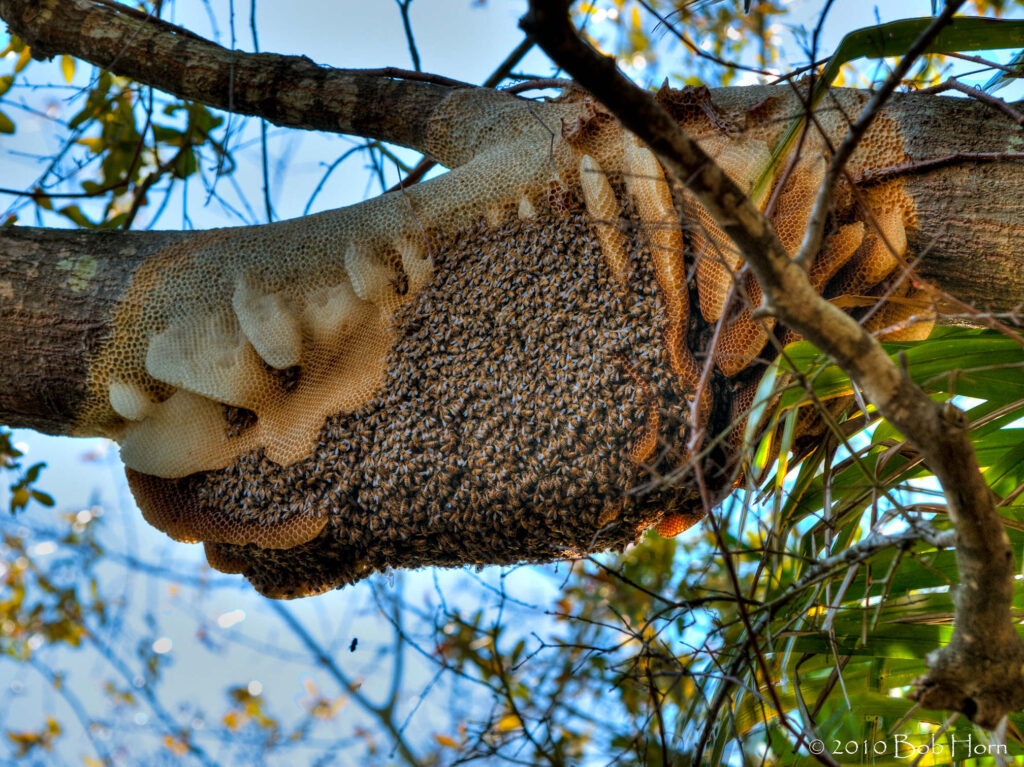
Bees play an essential role in maintaining our ecosystem. They are vital pollinators, responsible for helping plants, fruits, and vegetables grow. However, when bees establish colonies in your yard, you may wonder if they pose a risk and whether you need to remove every bee colony from your property. This blog post will explore when it’s necessary to remove a bee colony, how to identify if a colony poses a risk, and how to deal with bees in your yard in an eco-friendly manner.
The Importance of Bees
Before addressing whether you should remove bee colonies, it’s important to understand the vital role bees play in the environment:
- Pollination: Bees pollinate flowers, fruit trees, and crops, ensuring the production of seeds, fruits, and vegetables. In fact, it’s estimated that one-third of the food we consume relies on bee pollination.
- Biodiversity: Bees contribute to plant biodiversity, supporting the growth of wild plants that provide habitats and food for other species.
- Honey Production: Some bees, particularly honeybees, are essential for honey production, which has economic and health benefits.
Because bees are so essential to the ecosystem, it’s important to carefully assess the situation before deciding to remove a bee colony.
Do You Need to Remove Every Bee Colony?
The answer to whether every bee colony in your yard needs to be removed depends on a few factors. In many cases, bees can coexist with humans without causing problems. However, there are specific situations where removal may be necessary or recommended.
When Bee Colonies Can Stay
Bees Are Nesting in an Out-of-the-Way Location:
If a bee colony is located in an area that’s far away from your home or high-traffic areas, you may not need to remove them. For instance, a colony living high up in a tree or tucked away in a quiet corner of your garden likely won’t bother you or your family. In this case, the bees can remain undisturbed, and you can enjoy the benefits they bring to your plants and garden.
Non-Aggressive Species:
Certain species of bees, such as solitary bees or bumblebees, are non-aggressive and are less likely to sting unless directly threatened. If you have identified that the bee colony in your yard belongs to a docile species, they can safely coexist without posing much of a risk.
Temporary Swarms:
Sometimes, you may notice a swarm of bees temporarily resting on a branch, fence, or other structure in your yard. These swarms are usually in transit, with the bees looking for a new place to establish a hive. Swarms typically move on within a day or two, so removing them isn’t necessary unless they linger or pose a direct threat to people.
When Bee Colonies Should Be Removed
The Colony Is in a High-Traffic Area:
If the bees have established a colony close to doorways, children’s play areas, or walkways where people frequently pass, removal may be necessary. In these situations, the risk of people accidentally disturbing the hive and getting stung increases, making it dangerous to keep the bees around.
The Colony Is Inside Your Home or Structure:
Bees occasionally establish colonies inside the walls of homes, sheds, or attics. This can lead to significant damage over time, as bees may chew through insulation or wood, and their honey can attract other pests. If a bee colony is inside your home or another structure, professional removal is necessary to avoid long-term structural issues and potential harm to you and your family.
Aggressive Bee Species (Africanized Honeybees):
In some regions, Africanized honeybees, also known as “killer bees,” can be a concern. These bees are more aggressive than typical honeybees and more likely to attack when their colony is disturbed. If you suspect you have Africanized honeybees on your property, it’s important to contact a professional for safe removal, as they can pose a serious threat to humans and pets.
Eco-Friendly Methods for Bee Colony Removal
When bee colony removal is necessary, it’s crucial to do so in a manner that protects both the bees and the environment. Here are some eco-friendly options to consider:
Contact a Professional Beekeeper or Bee Removal Service:
Many professional beekeepers offer bee removal services that relocate the bees to a safer location where they can continue to thrive. This is especially common for honeybee colonies, as they are valuable to agriculture and honey production. Rather than exterminating the bees, professional beekeepers will ensure they are moved to an appropriate location, preserving their essential role in the environment.
Avoid Pesticides:
Using pesticides or harmful chemicals to remove bees is not only detrimental to the bees but also the environment. Pesticides can kill beneficial insects and contaminate the soil, water, and plants in your yard. Always opt for humane and eco-friendly removal methods to minimize environmental impact.
Use Preventive Measures:
If you’ve successfully removed a bee colony, it’s a good idea to take preventive steps to ensure bees don’t return to the same spot. Seal any cracks, crevices, or gaps in your home’s walls, roof, or foundation that could serve as entry points. Keeping your yard clean and free of strong scents from sugary foods or drinks can also help deter bees from settling nearby.
How to Coexist with Bees
For many homeowners, the goal is to coexist with bees rather than remove them entirely. Here are a few tips for living alongside bees safely:
- Maintain Distance: Allow bee colonies to remain in place if they are not near high-traffic areas. Simply maintaining a respectful distance can reduce the chances of stings and other issues.
- Be Aware of Allergies: If you or a family member is allergic to bee stings, take extra precautions to ensure bees don’t settle too close to your home. Always carry an epinephrine auto-injector (EpiPen) if someone in your household has a bee allergy.
- Create a Bee-Friendly Garden: Consider planting bee-friendly flowers and plants in a designated area of your yard, away from high-traffic zones. This can help attract bees to a specific spot where they are less likely to bother people but can still contribute to pollination.
Be Mindful
Not every bee colony in your yard needs to be removed. In many cases, bees can safely coexist with humans and provide vital pollination benefits to your garden. However, when bees pose a threat to your safety or are located in inconvenient areas, removal may be necessary. Always choose eco-friendly and humane removal methods, and whenever possible, consider ways to coexist with these important pollinators.

